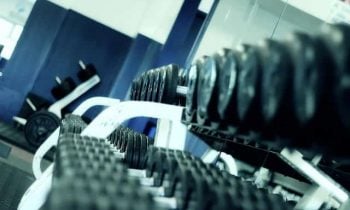As you age your bones and muscles become weak which could affect your range of movements. Normal functions, such as walking, standing, and climbing up stairs can gradually become difficult.
Do not let these changes limit your activities. Now is the perfect time to be more active. As some people say, you will lose it if you do not use it.
Flexibility exercise mainly involves stretching. This type of exercise is recommended for older adults especially those over 50 because it helps to:
- Maintain Physical Strength
- Maintain or Improve Range of Movements
- Reduce Risk of Injuries
- Improve Posture
- Improve Blood Circulation
Some studies also suggest that flexibility exercises can help to reduce pain and improve overall well-being.
Flexibility Exercises for Adults Over 50
Flexibility exercises are fairly simple and you can do them at home. Here are some examples:
1. Neck Stretch
It helps maintain and improve the mobility of your neck and it exercises your shoulders and upper back muscles.
First, stand up straight with your legs slightly apart from each other and your hands on your hips. Next, bring your chin toward your chest and up then lean from side to side. Do it repeatedly and hold each position for 15 seconds. You may hear crackling sounds as you go and that’s normal.
2. Shoulder Stretch
This exercise is particularly helpful in stretching muscles you use for reaching up and for taking off your clothes.
Inhale deeply as bring your palms together in front of your chest then exhale as you bring your arms over your head. Bring your arms down to your side and slightly squeeze your shoulders as you do. Keep repeating these steps.
3. Side Shoulder Raise
It helps to improve the strength and mobility of your arms and shoulders which is particularly helpful when pushing or pulling.
Stand up straight with your arms placed on your sides and your feet slightly apart from each other. Hold lighter weights on both hands then bring one arm outward over your head while keeping the elbow straight. Lower your arm and do it 10 times. Repeat these steps with the other arm. Inhale as your bring your arm upward then exhale as you bring it down.
4. Back Reach
This makes your shoulders and your chest muscles more flexible which are particularly useful when you have to reach behind for something.
Stand up straight. Inhale as you place your hands at your back and lock them together. Let your breath out as your hands slightly reach backwards then bring your arms to your sides. Repeat for at least 10 times.
5. Chest Stretch
This helps to strengthen your shoulders and chest muscles, improves posture and lung function.
You can either sit or stand during this exercise. Keep your back straight. Bring your hands locked together and inhale deeply as you bring them over and behind your head. Exhale deeply as you bring them back to position. Repeat for at least 10 times.
6. Ankle Stretch
This exercise strengthens the ankles which are important for balance and stability.
Sit on a chair with your back straight and your feet flat on the floor. Extend your right knee and rotate your ankle clockwise at least 20 times, then rotate counter clockwise for at least 20 times. Repeat these steps with your left ankle.
7. Thigh Stretch
You use your lower body in almost all your daily functions. You need to exercise your hips and legs to maintain the flexibility and mobility of your lower body.
Stand up straight and hold the backrest of a chair with both hands. Keep your feet apart as far as you can. Fold your right knee and bring it outward up to the side. Hold the positions for 10 seconds then bring back your knee to original position and repeat. Repeat these steps with your left leg.
When doing these exercises, here a few reminders to avoid unnecessary risks:
- These flexible exercises should not cause pain.
- Avoid intense stretching or bouncing movements.
- If you have injuries or recently underwent surgery, consult with your doctor first if stretching is advisable for you.
The older you get, the more you need to stretch your limbs to maintain their flexibility and range of motion. Get moving.


 GYM workout
GYM workout Caloric Intake for Over 50s
Caloric Intake for Over 50s Vitamin D for Over 50
Vitamin D for Over 50 Magnesium for Over 50
Magnesium for Over 50 Bodyweight exercises
Bodyweight exercises